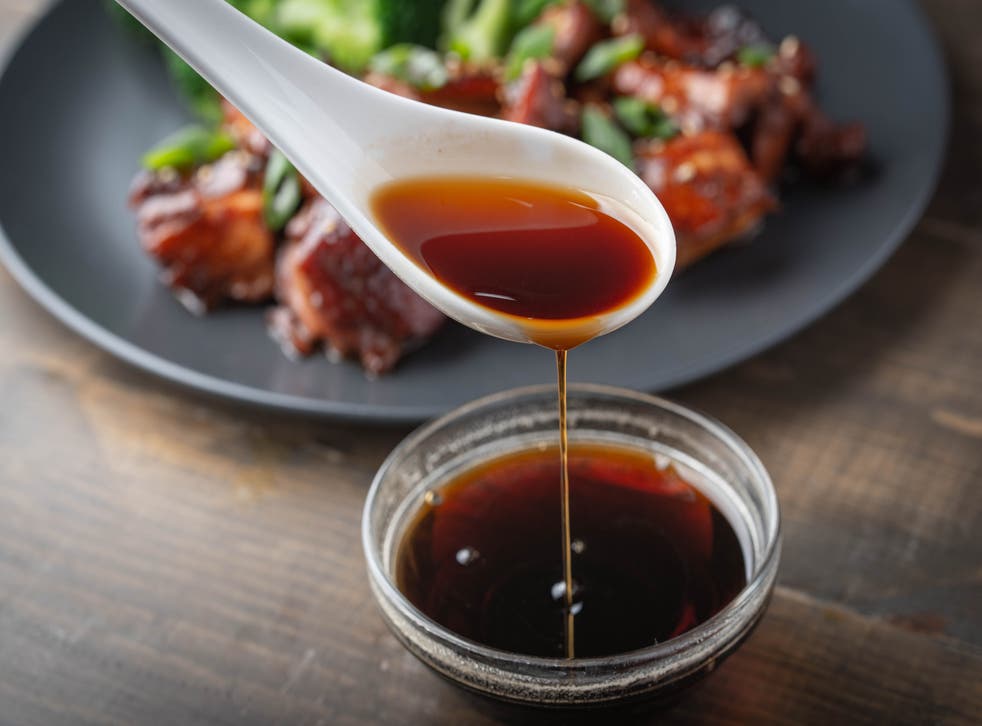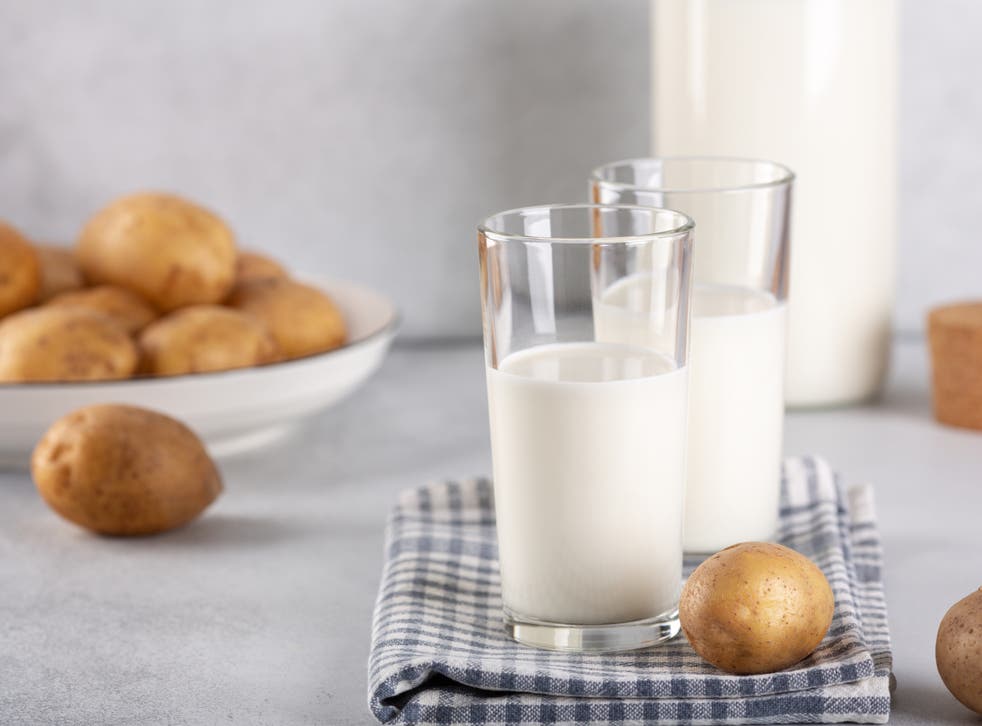Vegan Trends You'll Be Seeing A Lot Of In 2022
Coming off the back of Veganuary a couple of months back, the UK is the largest consumer and...
Thank you for visiting us!
This website does not completely support on Internet Explorer. Please use another browser.
Apologies for inconvenience

With statement bakes and fusion flavours predicted to be popular in 2022, kate ng discovers the ingredients that will top our shopping lists
When future food historians look back on the year that was 2021, they may be intrigued by how the highs and lows of these past 12 months were closely reflected in what Britons chose to eat throughout the second year of pandemic living.
In the early months of 2021, we were thrust into the third national lockdown after a miserable Christmas spent isolating and away from loved ones. Pandemic fatigue was setting in and the frenzied energy of the first two lockdowns that saw people cooking up a storm had faded.
In the first quarter of what was shaping up to be another doomed year, food delivery apps saw demand for their services soar as people put down their spatulas, discarded their sourdough starters and decided they were done with washing up. Deliveroo saw orders double in the first six months of 2021, while Just Eat reported that it processed 200 million orders globally by April – 64 million of those orders were made in the UK.
Then summer arrived, all sunshine and hope, and lockdown measures were eased. But all the months of staying at home turned us into a “nation of homebodies”, according to Waitrose’s Food & Drink Report. Sales of cookware rose by 23 per cent, reported John Lewis, and 36 per cent of respondents introduced a “home happy hour” as we shook up cocktails and drank more at home.
At the same time, people who were missing out on their usual travels abroad sought to recreate that holiday feeling by cooking foreign cuisines. Food allowed us to cross continents without ever going to the airport. Waitrose Cookery School said it saw demand for in-person courses such as its Bao Cookery Class and Chicken Ruby Murray with Naan and Shawarma Feast rise, as well as virtual classes including its Taste of Italy, Curry Night and Make Bibimbap At Home.
The urgency of the climate crisis also spurred people towards a more plant-based diet in 2021. According to Ocado’s Trends of the Year Report, there was a 29 per cent year-on-year growth in purchases of plant-based alternatives on the online grocer’s website between 2020 and 2021, more than ever before. Ocado also noted that social media has been crucial in driving plant-based eating, with 85 per cent of Britons admitting their dietary shift was a direct result of seeing vegan-related content online.
The popularity of veganism was also reflected in the launch of several vegan burgers by fast-food chains, including McDonald’s new McPlant Burger, Burger King’s new Vegan Royale and Plant-Based Whopper, and, for a limited time, Shake Shack’s Vegan Crispy Shallot Burger.
As the sun sets on 2021, food retailers and supermarkets are looking ahead to try and predict what will be landing on our plates in the next 12 months. After careful analysis of numerous trends reports, here’s what we think will whet our appetites in 2022:
A number of supermarket predictions have named “umami” as their top food trend of 2022. However, this is extremely vague – after all, umami is a taste, not a food, and although the concept of a fifth basic taste has only been catapulted into popular culture in recent years, the word was coined in 1908 by Japanese chemist, Kikunae Ikeda.
Before the word entered the western world’s lexicon, there were four widely-accepted basic tastes; sweet, sour, salty and bitter. But umami encapsulates moreish, savoury flavours that we love in ingredients like soy sauce, parmesan and stocks.

Soy sauce is one of the biggest umami hits
Waitrose thinks the popularity of umami will make it “the prevailing profile in our food” next year, with sales of its Cooks’ Ingredients Umami Paste rising by 17 per cent in 2021 compared to 2019. The paste contains ingredients such as anchovy paste, garlic, black olives, red wine, wine vinegar, Parmigiano Reggiano and porcini mushrooms – all foods heavy with the essential glutamates that arouse the sensation of umami on our tongues.
In terms of ingredients, Asda’s senior director of food innovation and trends, Jonathan Moore, tells The Independent that truffle “isn’t going anywhere any time soon” as the sought-after mushroom “brings with it that fifth taste sensation of umami along with a true sense of luxury”.
Meanwhile, Sainsbury’s expects sea greens to take the spotlight next year, thanks to their “desirable umami flavour”. The supermarket saw an 89 per cent increase in online searches for seaweed in the last year, and is predicting that other sea crops like zostera marina, dulse, mankai duckweed, and kelp will be “hailed for their nutritional credentials”.
There is no mention of monosodium glutamate (MSG) in any trend predictions – the much-maligned amino acid discovered by Ikeda and stabilised with salt. MSG is found naturally in some foods such as tomatoes and cheese, and already features heavily in stock cubes, soups, gravy, condiments, and savoury snacks. However, unsubstantiated claims that MSG triggered headaches, chest pains, dehydration, and other symptoms of poor health gave the ingredient, which is widely used in east and south east Asia, a bad name.
But there is hope yet that 2022 will be the year we get rid of “Chinese restaurant syndrome” (which refers to the “symptoms” some people claim to experience after eating at Chinese restaurants where MSG is used) once and for all. Given that you can purchase bags of the stuff in Asian supermarkets, it might not be a huge stretch of the imagination to see it becoming a staple pantry ingredient.
The rise of vegetarianism and veganism, as well as climatarianism – a diet focused on reducing your carbon footprint – is expected to continue, and with it, more plant-based offerings. Plant-based milks are therefore gaining in popularity, with research from Mintel suggesting that one in three (32 per cent) Britons now drink plant-based milk, up from 25 per cent in 2020.
Ocado’s buying manager for non-dairy milks, Rosie Hodgson, predicts a focus on blended milks in 2022 as people prioritise nutritional benefits, especially protein and calcium. “Blended milks will continue rising in popularity, as products are created to taste more like regular cow’s milk, as well as having a focus on sustainability. Oat as an ingredient is definitely here to stay. We recently saw the launch of Pea & Oat milk on Ocado and will see more alternatives launching next year.”
Meanwhile, Waitrose is predicting that potato milk will be the new kid on the block. Low in sugar and saturated fat, the retailer expects it will dominate coffee shop menus in the coming months.

Vegan-friendly potato milk is expected to be big next year
As the pandemic continues to scupper our ability to travel and with plans for going abroad still in flux, we can expect to continue broadening our palates while staying put. At the same time, immigrants and their families who are unable to return to their home countries are searching for ways to cure homesickness by recreating their native cuisines, which means we can expect to see an uptick in fusion foods in 2022.We know so many people are craving international travel, so where they may not be able to achieve that in person, they will look to experiment through the food on their plate
The trend-setting experts at Pinterest saw a 120 per cent surge in searches for traditional Norwegian recipes and more than 150 per cent rise in searches for traditional South African recipes in the past year. Meanwhile, searches for traditional Russian food tripled and traditional Arabic food doubled on the pinning platform. Commenting on the findings, Pinterest says: “This year, Generation X and Boomers will say goodbye to over-the-top eating experiences and embrace their roots (or somebody else’s!).”
All the interest in non-native foods in the UK will likely result in the return of fusion food, Moore says.
“We can [expect] to see fusion food becoming popular once again. We know so many people are craving international travel, so where they may not be able to achieve that in person, they will look to experiment through the food on their plate,” he continues.
“As we’ve seen before, this can lead to a whole manner of intriguing flavour combinations. This approach to cooking allows chefs to get creative and experiment, mixing things like classic French cooking with the inclusion of a trending Japanese ingredient, for example.”
Marco Ardemagni, head chef of Yatay in London’s Chinatown, also expects cross-border pairings to dominate the restaurant scene in 2022. He tells The Independent that he is particularly excited by the use of koji – a strain of mould used to inoculate rice and is often used in Japanese cooking. It is a key ingredient in making miso and soy sauce, and Ardemagni thinks it will become popular among chefs looking to introduce a new type of “flavour bomb” to their creations.
Ocado’s buying manager of meal solutions, Lucy Hamblion, thinks the fusion trend will also be reflected in ready meals, which she believes will be “taken to another level next year”, particularly across Middle Eastern, French, Japanese, and Asian Fusion.
“Restaurants such as Pizza Pilgrims, Pasta Evangelist and Cote @ Home are branching out more in this space to create the sense of affordable luxury, while recognising the trend for the scratch cooking at home, by providing meal kits with experience and authenticity, as well as providing something for every audience and occasion,” she says.
Britons are obsessed with cakes, which is clearly reflected in our enduring love for The Great British Bake Off and with baking in general. Moore reminds us that 2022 will bring us the Queen’s Jubilee year, which he says will “undoubtedly feed into food trends throughout the year, think afternoon tea, picnics, and British classics”.
“Home baking will likely make a triumphant return as the nation opts for homemade bread, Victoria sponge cakes and cloudy lemonade. This trend will be all about nostalgia with a 2022 edge,” he adds.
Pinterest is also expecting baking to take centre stage next year, but in a much louder way, as keen bakers look to challenge themselves with more difficult statement bakes. Searches for “gravity-defying cake ideas” surged by more than 70 per cent in 2021, “bubble cake ideas” by 55 per cent, and “3D cake ideas” by 60 per cent.
The platform says in its trends report: “In 2022, bakers will give us the badly ‘kneaded’ cake break we’ve all been waiting for. People will craft elaborate cakes to express whatever mood they’re in, from gravity-defying tiers to bubble and 3D cakes.“With the world’s most beloved baking program born in the UK, Brits will be baking-obsessed in 2022,” it added. “In a market that’s known for its attention to refined detail, some of the leading cake trends here are more modern than you might expect. Abstract drip cakes and jelly art cakes take these bakes squarely into an edible-art direction with treats that are truly museum-worthy.”
These are undoubtedly exciting times for food-lovers ahead. Whatever lands on our plates in 2022, we can only hope for an abundance of sweetness and umami to temper the bitterness of 2021.
This article first appeared in the Independent.
Coming off the back of Veganuary a couple of months back, the UK is the largest consumer and...
Retailers take note: the flexitarian movement is going strong. In Whole Foods...